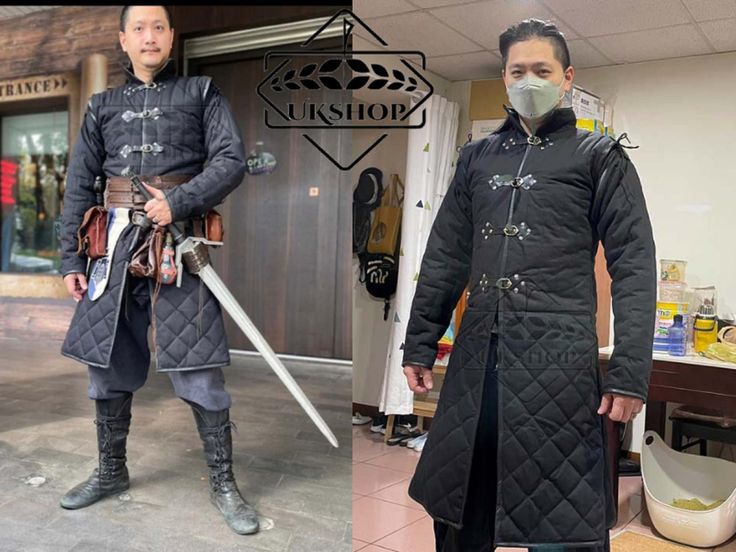Introduction
Gambeson, an ancient yet indispensable piece of armor, holds a significant place in the annals of military history. Its evolution spans centuries, serving as a protective layer for warriors across diverse cultures and epochs. From medieval knights to Ottoman soldiers, the gambeson has been a steadfast companion in the tumult of battle. In this article, we delve into the origins, construction, and utility of the gambeson, shedding light on its enduring legacy.
Origins and Evolution
The gambeson traces its origins to early medieval Europe, where padded garments were fashioned for protection against the rigors of combat. Initially constructed from layers of linen or wool, these rudimentary garments evolved over time, incorporating quilting techniques for enhanced resilience. As warfare advanced, so too did the gambeson, adapting to the changing demands of battlefield dynamics.
Construction and Materials
Crafted with meticulous attention to detail, the gambeson comprises layers of fabric densely packed to absorb impact and deflect blows. Historically, materials such as linen, wool, and even silk were employed in its construction, offering varying degrees of comfort and protection. The quilting of these layers not only reinforced the garment but also provided flexibility, allowing warriors to maneuver with agility amidst the chaos of warfare.
Functionality on the Battlefield
The primary function of It was to mitigate the force of weapons wielded by adversaries. Whether facing the thrust of a sword or the impact of a mace, the padding of it offered a crucial buffer against injury. Beyond its defensive capabilities, It also served as insulation against the elements, providing warmth during cold campaigns and wicking away sweat in the heat of battle.
Also read this" AMS25FA Presale: Capitalizing on the 2024 Cryptocurrency Boom "
Conclusion
The gambeson stands as a testament to the ingenuity and resilience of ancient warriors. Across epochs and continents, its padded embrace provided a measure of safety amidst the chaos of battle. From the sun-drenched fields of medieval Europe to the dusty plains of the Near East, it remains an enduring symbol of courage and endurance in the face of adversity.
FAQs
- What is the historical significance of the gambeson?
The gambeson played a pivotal role in medieval warfare, offering essential protection to soldiers across Europe and beyond. Its widespread use underscores its significance as a staple of medieval armor. - How effective was the gambeson in combat?
While not impervious to all forms of attack, it provided substantial protection against slashing and blunt force trauma, reducing the likelihood of serious injury on the battlefield. - Was the gambeson exclusively worn by knights?
No, it was worn by soldiers of varying ranks and backgrounds, ranging from foot soldiers to knights and cavalrymen. Its affordability and versatility made it accessible to a broad spectrum of combatants. - Did the design of the gambeson change over time?
Yes, the design of it evolved in response to advancements in weaponry and tactics. Over the centuries, alterations in construction and materials reflected the ever-shifting nature of warfare. - Is the gambeson still utilized in modern reenactments and historical interpretations?
Absolutely, It remains a staple in historical reenactments and interpretations, serving as a tangible link to the martial traditions of bygone eras.










